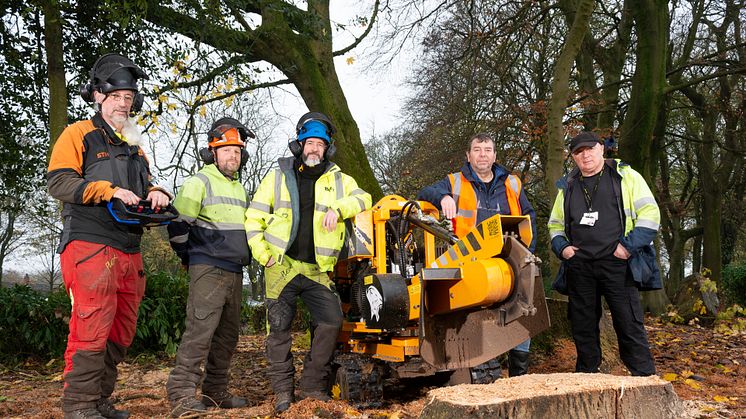
Press release -
£175k funding boost to care for trees on council-owned land
Bury Council is to invest an extra £125,000 in tree management to help reduce a backlog of lower priority pruning and felling work on council-owned land.
An extra £50,000 will also be put into dealing with issues caused by Ash Die Back.
This additional funding follows on from a recent £27.5k investment in new equipment to improve the efficiency of tree stump removal when trees must be felled.
Benefits will be seen borough-wide over the next 12 months as the council’s grounds maintenance service tackles a backlog of more than 300 tree work jobs alongside their planned tree maintenance programme and urgent priority work.
The team will also deal with around 100 confirmed cases of ash trees that have been found to have Ash Die Back on council-owned land.
Councillor Alan Quinn, cabinet member for the environment, climate change and operations, said: “Maintaining our trees and planting new ones is a priority to support the environment. We are responsible for over 200,000 trees across the borough, and we receive many more requests for tree work than we have the funding to deal with. This extra investment will mean our grounds team will be able to tackle some of the lower priority work that has built up in recent years.
“While trees can cause problems as they age, they provide many benefits such as cleaning our air, sequestrating rainfall, reducing noise, providing shade and shelter and creating wildlife habitats. For example, oak trees are home to over 2,300 different species.
“We are working in partnership with Manchester, City of Trees to plant more trees and to date we have planted over 35,000 trees including many “standard” trees.”
Ash Die Back initially started in Asia and has spread to this country and the Bury borough could lose over 80% of its ash tree stock over the next ten years. Once an ash tree has the disease, in most cases it must be felled, although some can recover. Trees are assessed twice over a six-month period, usually when in leaf and out of leaf, to see if the disease has progressed or the tree is making a recovery.
Bury Council surveys around 1,100 trees per year on bus routes and busy A-listed roads and maintains in the region of 200,000 more trees in parks and for Six Town Housing. For roadside trees there is a street tree pruning programme which operates on a five-year cycle. View the pruning programme by area at www.bury.gov.uk/streettrees
Issues with trees on the highway or council-owned land can be reported to the council online at www.bury.gov.uk/reportit-trees. Residents are advised that all tree work has to be prioritised with precedence given to trees that are dead, dying or dangerous to people or property.
ENDS
Press release issued: 23 March 2023.
Photo: Cllr Alan Quinn (second from right) with the grounds maintenance team and the new machinery for tree stump removal. (The Predator 38RX radio-controlled stump grinder has fully programmable controls plus 6x multi-tip teeth, a 54” swing, 18” cutting depth, 30” cutting height, up to 1000mm variable track width and weighs just over 1000kg).
Topics
Categories
Regions
Find us on: Facebook.com/burycouncil, Flickr.com/buryphotos. @burycouncil and bury.gov.uk


